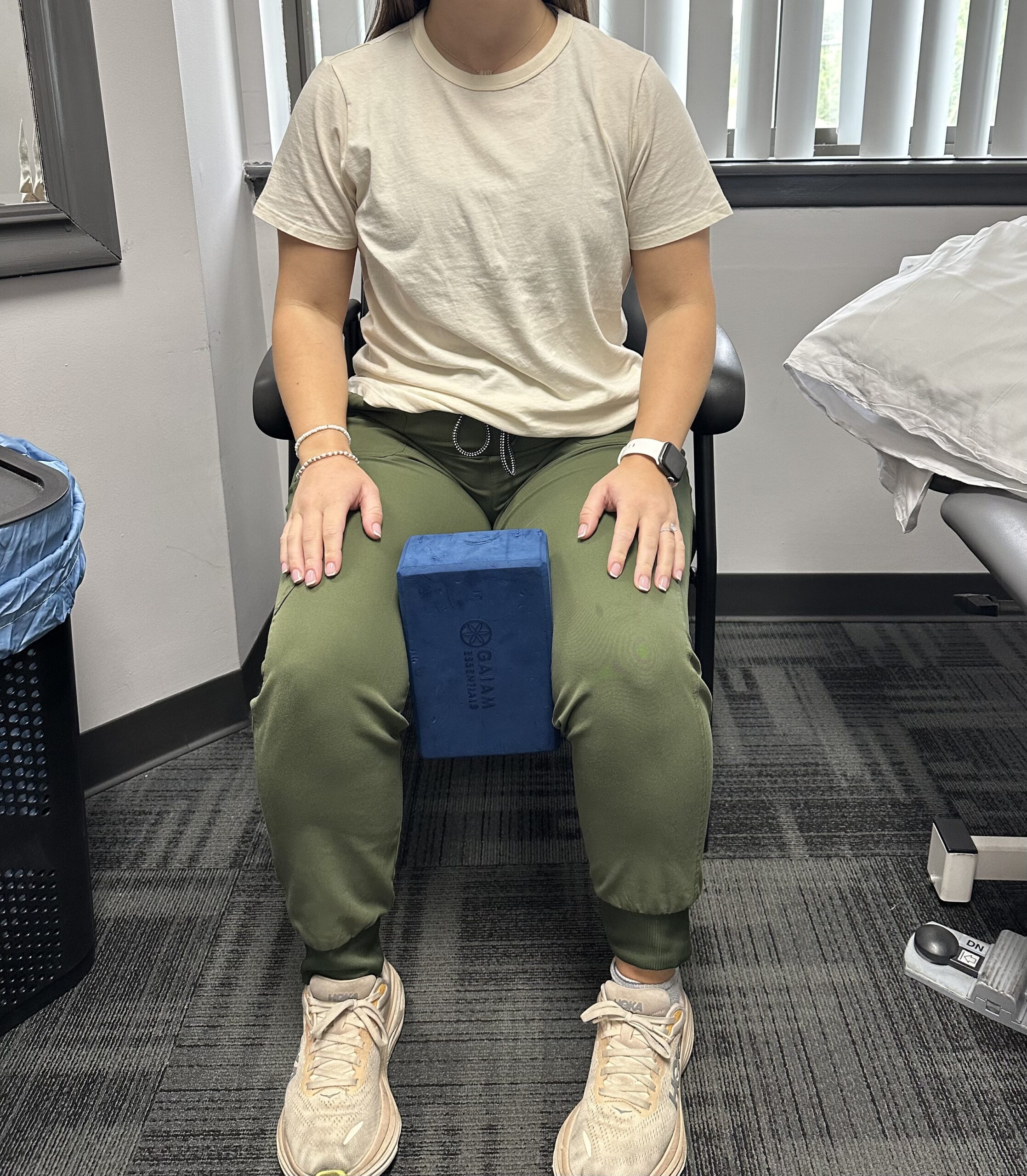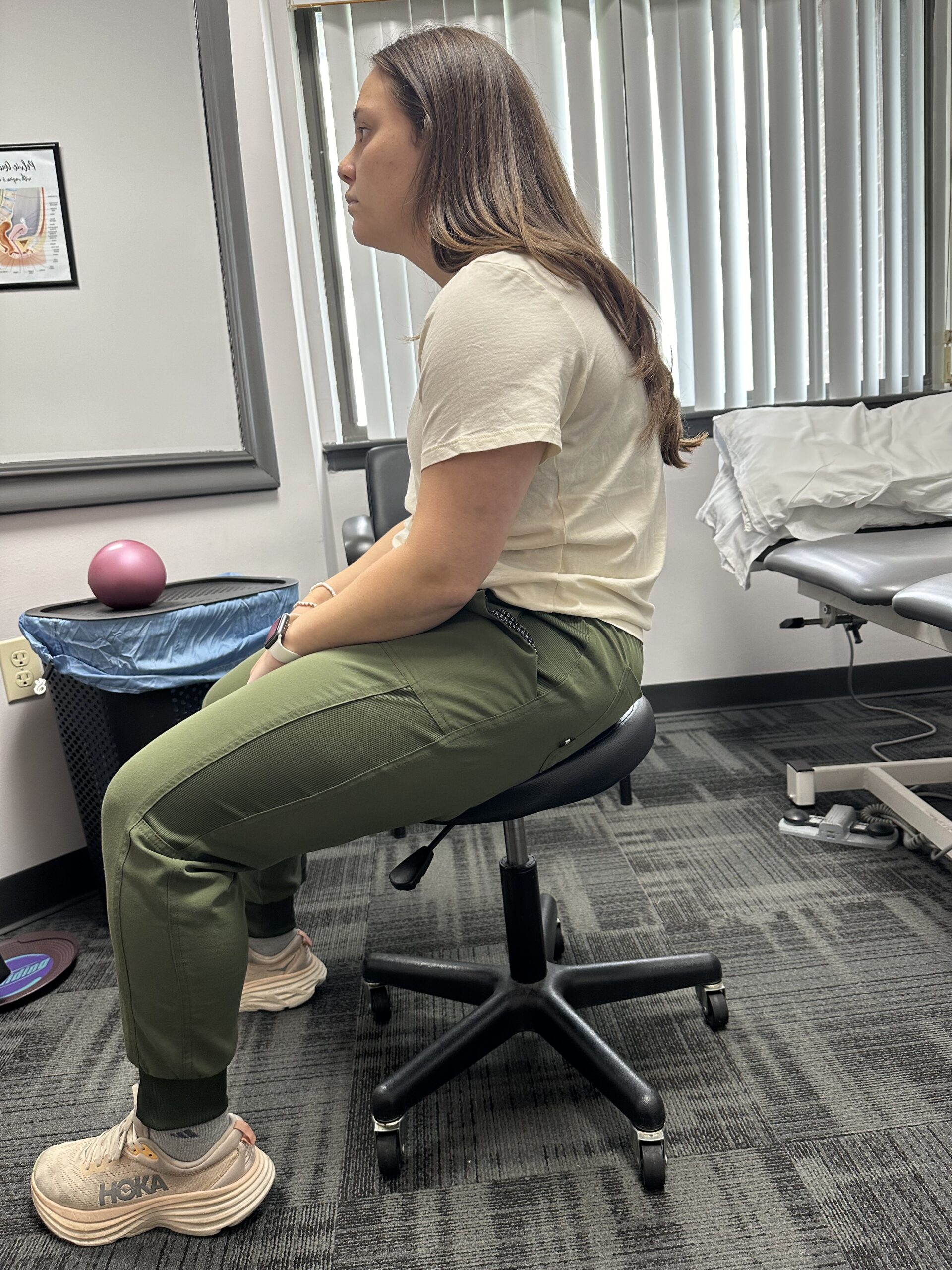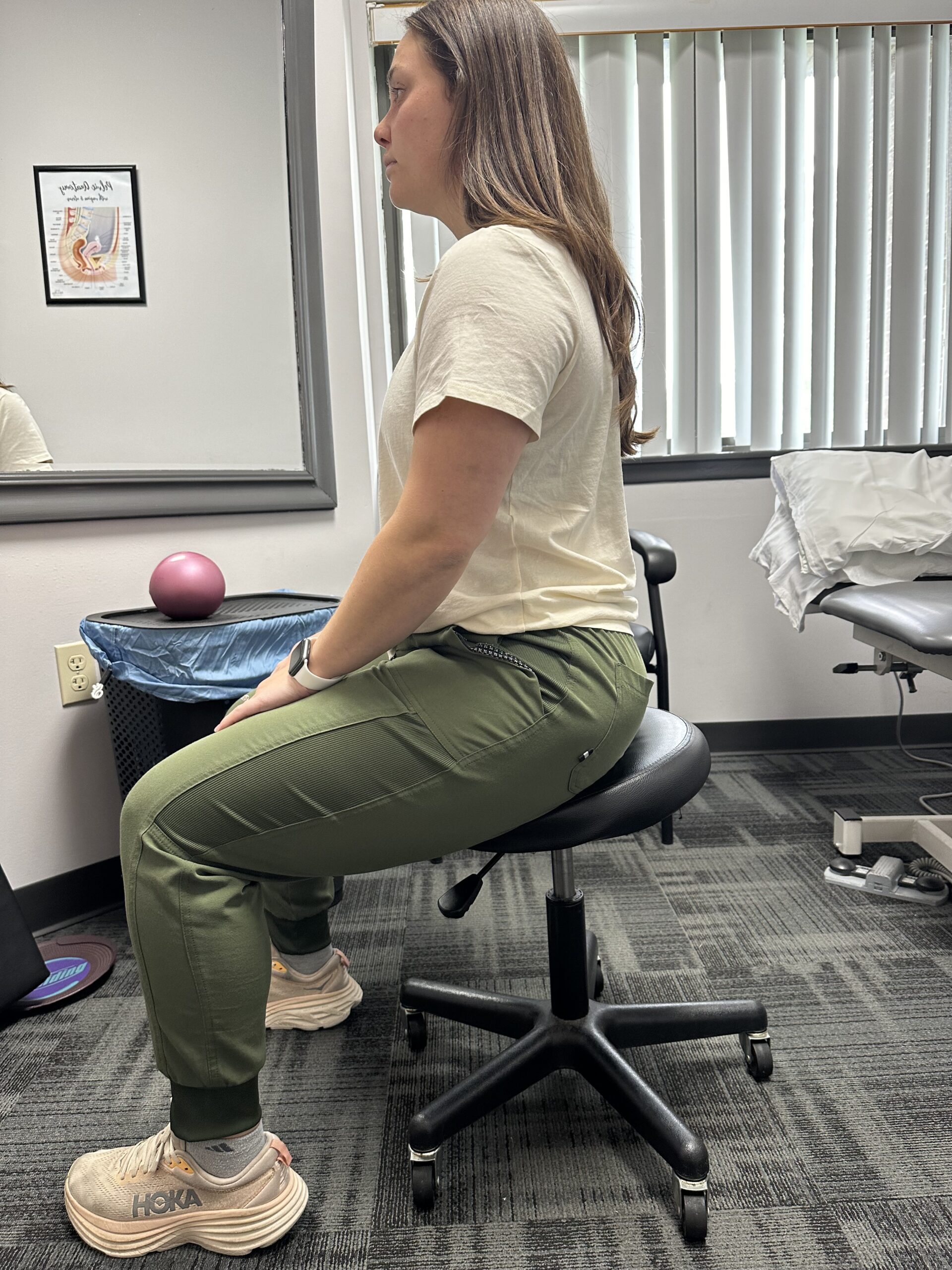When asked, “where does it hurt?” or “can you describe the pain?”, individuals commonly struggle to provide an answer and point to a couple of spots or give a broad answer, especially if it is in an area where pain has never been experienced before. One specific area is the pelvis. Pelvic pain is often one of those areas that is very difficult to describe and is often associated with a number of symptoms that might not always add up. Many times, people will be instructed to avoid activities or movements that increase the pain, however, this can be nearly impossible especially if those activities involve caring for children, cooking, cleaning, sitting, standing, or sleeping. In this article, some of the most common locations and complaints of pelvic pain as well as their respective signs and symptoms will be discussed along with some tips and helpful hints for management and relief.
Pain in the front of the pelvis where the two bones meet
Pelvic pain is most commonly found during pregnancy due to hormonal changes in the body, combined with the pressure of the baby causing the ligament connecting the two sides of the pelvis to become more relaxed leading to pain. The purpose of this ligament in addition to connecting the pelvis is to provide stability and help with absorbing pressure during physical activities. Pain is typically located at the center, right, or left at the connection of the two bones of the pelvis. Common findings and complaints include tingling, burning, or stabbing pain at the center of the pelvis; difficulty or pain with walking and/or climbing stairs; difficulty or pain putting on pants; difficulty or pain standing on one leg; difficulty or pain moving in bed.
If experiencing pain here, the following include some ideas of things to try to help manage the pain- maintain symmetry of the body and pelvis while sleeping, sitting, and changing positions. While sleeping, placing a pillow between the legs, including knees and feet, can help to maintain a neutral spine (see image to the right). When sitting, keep equal pressure on both sitz bones with pelvis, ribcage, and head/shoulder all stacked and use back support as needed to achieve and maintain neutral.
As for changing positions, the goal is to keep the pelvis as neutral as possible and avoid wide leg positions if they increase pain. In regards to exercises to help reduce or manage the pain, core and gentle lower body strengthening is recommended. One of the most important exercises is transverse abdominus (TA) activation or bracing, as this muscle provides stability to the pelvis therefore helping to maintain neutral especially when changing positions. The TA can be activated in any position by drawing the abdomen in as if zippering up a jacket. Another helpful exercise is called the seated hip adductor isometric with a yoga block (or rolled up towel). This can be done in a seated position with good posture, a yoga block between the knees, then by using the inner thigh muscles, squeeze the yoga block gently for 3-5 seconds and repeat 10-20x. It is also helpful to activate the TA prior to performing this exercise. If having any difficulty with either exercise or it is causing more pain, it is encouraged to seek out a pelvic floor PT for assistance, or for a more individualized and/or guided approach for treatment and management of symptoms.


Tailbone pain
Tailbone pain, also known as coccydynia, can occur as a result of a trauma to the area, whether that is from a fall, during pregnancy or after delivery of a baby, or even prolonged sitting especially on a firm surface. Pain is typically located directly over the tailbone, surrounding the tailbone towards the right or left sides, or can even refer to the low back. Common findings and complaints include pain when pressing directly on top of the tailbone, difficulty/inability to sit for long periods or on hard surfaces, difficulty/pain with prolonged walking, pain going from sit to stand, tailbone feels like it gets “stuck”, difficulty or pain with/after bowel movements.
If experiencing these symptoms, adjust posture to avoid leaning backwards and tucking the pelvis under which would increase pressure directly onto the tailbone. It is also recommended to avoid prolonged sitting by standing up or adjusting position every 30 min-1 hour, or use a cushion to sit on with the back portion cut out (donut cushion also acceptable if section cut out for tailbone). If issues remain or techniques don’t work as hoped, seek out a PT for a more in-depth assessment of posture, mobility, and strength to identify and address any other impairments that might be contributing and provide a more individualized plan for symptom management and pain relief.


Sacroiliac Joint (SIJ) Pain
SIJ pain is possibly one of the most complex and extensive complaints of pain that individuals may have. Causes of SIJ pain can range from an injury or fall, pregnancy, muscle weakness or instability to list a few. Symptoms and pain locations can vary from the center of the pelvis over the sacrum (the bone at the back of the pelvis), to the left or right, or the low back. Pain can be found in the low back/pelvis where the hip bone and sacrum join together, down towards the sitz bones, radiating into the groin, and can also be related to numbness/tingling. Commonly reported symptoms include sharp, stabbing, or shooting pain; pain that increases with activities such as walking, running, climbing stairs, bending, or lifting; or pain that increases with prolonged inactivity such as sitting or standing in one place for a long period of time.
If experiencing these symptoms, avoid asymmetrical movements and transitions and maintain symmetry as able. Focus on postural alignment with a neutral pelvis position including a stacked pelvis, ribcage, and shoulders/head. While sleeping, try placing a pillow between the knees and ankles to keep hips aligned. Additionally, a supportive belt can decrease symptoms and allow for continuation of daily activities as it can help provide stability. Typically, SIJ pain is accompanied by muscle imbalances, therefore gentle strengthening of the core and muscles surrounding the pelvis can be beneficial, however if they increase pain, importance is stressed on finding a professional to aid in finding the cause of the pain and developing an individualized treatment plan.
Pelvic Pain During Pregnancy
All of the above-mentioned pain locations can be found during or after pregnancy and the management is oftentimes similar just with more specific considerations to ensure safety. It is important to remember that even though some of these symptoms are common during pregnancy, it does not mean nothing can be done to help manage or improve them and allow for an easier pregnancy.
Conclusion
Pain can be due to instability, weakness, tightness/flexibility restrictions and is often difficult to isolate. Many of the symptoms overlap and can present as multiple diagnoses. Seeking assistance and evaluation from a pelvic floor physical therapist could be helpful in determining where the dysfunction is stemming from and provide more of an individualized approach to managing pain, improving symptoms, and allowing for participation in all preferred activities.
Get Relief from Pelvic Pain – Schedule Your JAG Physical Therapy Visit Today
Pain can be due to instability, weakness, tightness/flexibility restrictions and is often difficult to isolate. Many of the symptoms overlap and can present as multiple diagnoses. Seeking assistance and evaluation from a pelvic floor physical therapist could be helpful in determining where the dysfunction is stemming from and provide more of an individualized approach to managing pain, improving symptoms, and allowing for participation in all preferred activities. Contact JAG PT today or schedule an appointment at any of our clinic locations across NJ, NY and PA to learn more.
